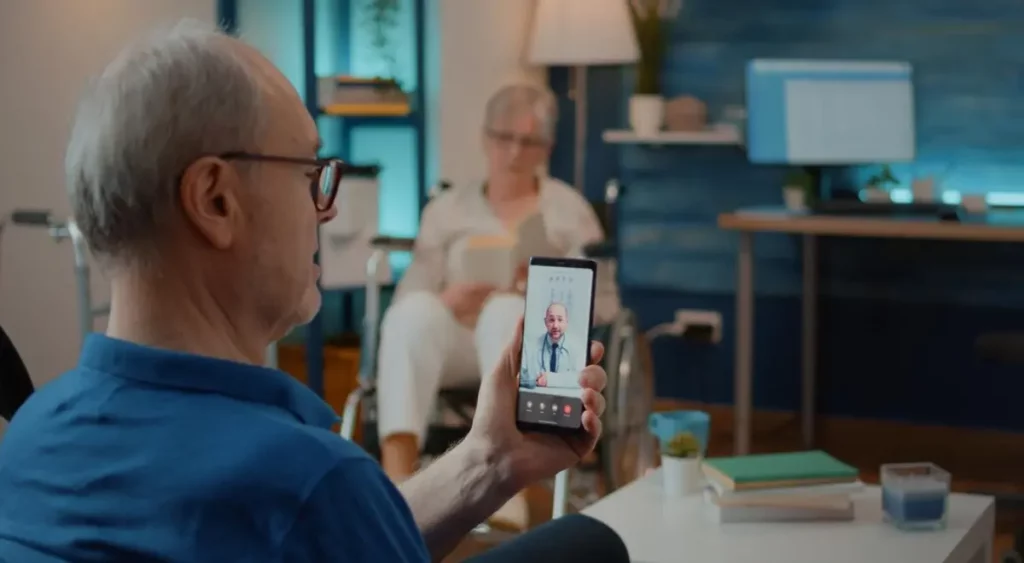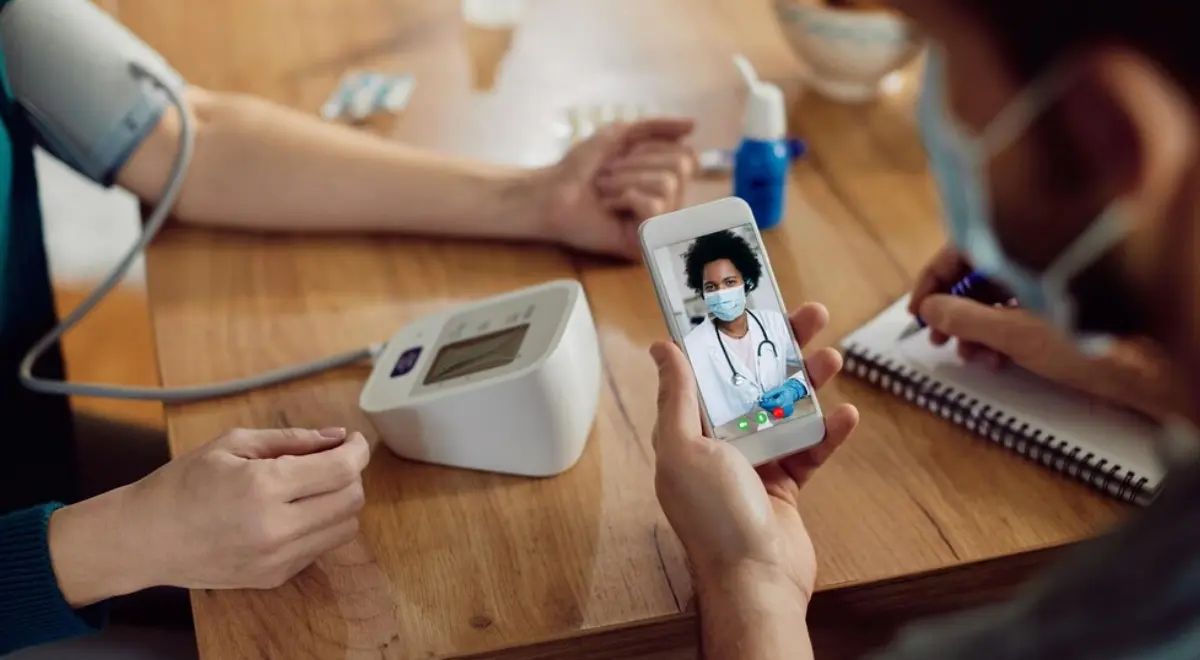Remote Patient Monitoring for Alzheimer’s

Alzheimer’s is a progressive neurological ailment that causes cognitive decline, memory loss, and behavioral abnormalities. Alzheimer’s disease affects around 6.9 million Americans aged 65 and older. By 2060, the number of impacted individuals is predicted to nearly triple to 14 million.
Early detection and monitoring of Alzheimer’s disease symptoms are critical for optimal care. Alzheimer’s disease presents with a variety of signs and symptoms, including memory loss, disorientation, changes in mood or behavior, and difficulties performing daily duties. The condition also presents substantial obstacles for patients and caretakers.
Table of Contents
ToggleImpact of Alzheimer’s Disease On Elderly Health
Alzheimer’s disease is more common in the elderly, although it can also affect young people. It is a progressive disorder that begins with mild memory loss and proceeds to loss of capacity to talk and respond to the surroundings. The disease’s symptoms may appear after the age of 60, and the risk rises with age.
Many Alzheimer’s patients are being cared for at home by family members. Although most people are eager to assist their family and friends, caring for someone with Alzheimer’s disease at home can be difficult and demanding at times. Every day, the caregiver adjusts to new abilities and behavioral patterns. People with Alzheimer’s disease usually require increasingly intensive care as the disease advances.
RPM Technology Solution for Alzheimer’s Disease
Remote Patient Monitoring (RPM) for Alzheimer’s disease can aid in determining cognitive and functional impairment in Alzheimer’s and dementia patients. RPM provides a realistic view of patients in their own homes.
Using modern technology, new and improved ways for accurately measuring functional decline in all phases of Alzheimer’s disease can be achieved through remote patient monitoring.
In this blog post, we will look at how RPM can be used to monitor Alzheimer’s disease care.
3 Ways RPM Helps Patients With Alzheimer’s Disease
- Provides remote monitoring in the comfort of home
Remote patient monitoring systems and smartphone apps with vital sign monitoring, and wearables (e.g., activity trackers), are non-invasive and can continuously evaluate health parameters and metrics in patients with Alzheimer’s. Remote patient monitoring devices are ideal for monitoring Alzheimer’s disease patients because they may assess processes in a “real-world” situation, providing greater validity and sensitivity than in-clinic examinations.
Remote patient monitoring technologies have the potential to be more useful than traditional in-clinic examinations as they track sleep, gait, and daily activities while the patient is at home. Remote patient monitoring systems do not rely on caregiver recall, making them more objective and less stressful for people with Alzheimer’s disease.
- Ensures safety and convenience
Self-care is very important for those with Alzheimer’s disease. As a result, remote patient monitoring focuses on the patient’s specific needs. Alzheimer’s disease makes it difficult to manoeuvre properly and raises the risk of falls. Having appointments at home, without the hassle of traveling, can be safer than going to an office or clinic for monitoring.
Remote patient monitoring allows patients to effectively manage their own health while also keeping track of important information about their condition. Remote patient monitoring systems may allow Alzheimer’s patients to have 24-hour access to their care teams, treatment regimens, and personal health information. Patients who participate in remote patient monitoring may have reduced stress, improved sleep habits, and increased physical fitness.
- Reduces healthcare costs
Remote patient monitoring is also cost-effective. Remote patient monitoring allows older people to stay at home longer while still receiving the care they need. This makes the choice ideal for those who do not wish to spend their senior years in a nursing facility.
Chronically ill persons can also benefit from it, as those with Alzheimer’s disease in the later stages sometimes struggle to adjust to new surroundings. Remote patient monitoring also reduces exposure to infectious diseases in general, which can have devastating consequences for persons with Alzheimer’s disease.
With RPM, patient vital sign data is securely obtained using FDA-approved RPM devices. Cellular medical devices or Bluetooth technology allows the data to be automatically transmitted to the physician’s RPM platform and analyzed.
Furthermore, RPM allows clinicians to evaluate health and immediately adjust treatment regimens.
Wearable Devices & Sensors
RPM devices can be used to monitor a variety of health parameters, including blood pressure, heart rate, temperature, oxygen saturation, peak expiratory flow, blood glucose, and weight. Wearable gadgets, such as smart watches or activity trackers, can track vital signs including heart rate, sleep habits, and physical activity. These insights enable healthcare providers to notice irregularities or changes in patterns, which may indicate deteriorating symptoms or health hazards.
Smart home solutions that include environmental sensors can monitor Alzheimer’s patients’ everyday activities and routines. These sensors detect movements, changes in room temperature, water usage, and much more, allowing caretakers or healthcare providers to notice safety concerns and provide needed support.
Video Monitoring & Medication Management
Video monitoring systems deployed in patients’ living environments allow for remote observation and monitoring of Alzheimer’s patients and their everyday routines. These cameras protect patient safety, track sleep patterns, and evaluate cognitive and functional capabilities. When deploying video monitoring, ethical considerations and privacy must be kept in mind.
Remote patient monitoring for Alzheimer’s disease can also help with medication adherence using smart pillboxes or reminder systems. These medical gadgets notify or remind patients and caregivers when it is time to take medication. Monitoring adherence remotely allows healthcare providers to assess treatment success and intervene as needed.
Monitoring for Alzheimer’s Disease – Key Points & Takeaways
Alzheimer’s disease can significantly impair a person’s quality of life, but continuous therapy and monitoring can help prevent symptoms and enhance quality of life. The condition weakens memory, thinking, learning, and organizing skills, gradually reducing a patient’s ability to accomplish daily chores. Alzheimer’s disease is not a natural part of becoming older. However, remote patient monitoring can help people with Alzheimer’s disease by managing their chronic care.
Remote patient monitoring for Alzheimer’s disease can provide significant insights, improve patient monitoring, and boost caregiver support. While RPM should not replace regular in-person clinical visits, it improves Alzheimer’s disease monitoring and allows people to age peacefully.
Take Charge Of Alzheimer’s Remote Monitoring With HealthArc
To promote patient and caregiver engagement, a remote patient monitoring experience must be secure, accurate, and easy to use. HealthArc’s digital health platform enables healthcare providers to establish clear remote patient management goals and outcomes, making it convenient and accessible.
Our RPM software is designed to scale your healthcare results and make patient care and management easy. Our suite of FDA-approved remote monitoring devices, patient communication and interaction capabilities, a dedicated customer success team, clinical software, physician dashboard, and billing capabilities provide a comprehensive solution to ensure efficient care management for Alzheimer’s patients.
Please request a free demo to learn how we can help your organization achieve its care management goals. Also, feel free to talk to our team at +201 885 5571 for any queries.
Most recent blogs
Categories
- Advanced Primary Care Management
- Behavioral Health Integration
- Cellular Remote Patient Monitoring
- Chronic Care Management
- Chronic Care Management Billing
- Chronic Care Management CPT Codes
- Chronic Care Management Program
- Chronic Care Management Software
- Digital Health Platform
- Principal Care Management
- Principal Care Management CPT Codes
- Remote Care Programs
- Remote Monitoring Devices
- Remote Patient Care
- Remote Patient Monitoring
- Remote Patient Monitoring Billing
- Remote Patient Monitoring CPT Codes
- Remote Patient Monitoring Devices
- Remote Patient Software
- Remote Therapeutic Monitoring
- Remote Therapeutic Monitoring Billing
- Remote Therapeutic Monitoring CPT Codes
- Telemedicine & RPM
- Transitional Care Management
- Transitional Care Management Billing
- Transitional Care Management CPT Codes
Related Posts
- February 21, 2025 | Read Time: 5 mins
RPM’s Role in Identifying Early Symptoms of Chronic Conditions for Prevention
- February 14, 2025 | Read Time: 4 mins
Monitoring Post-Surgical Recovery With RPM Systems
- February 10, 2025 | Read Time: 5 mins






